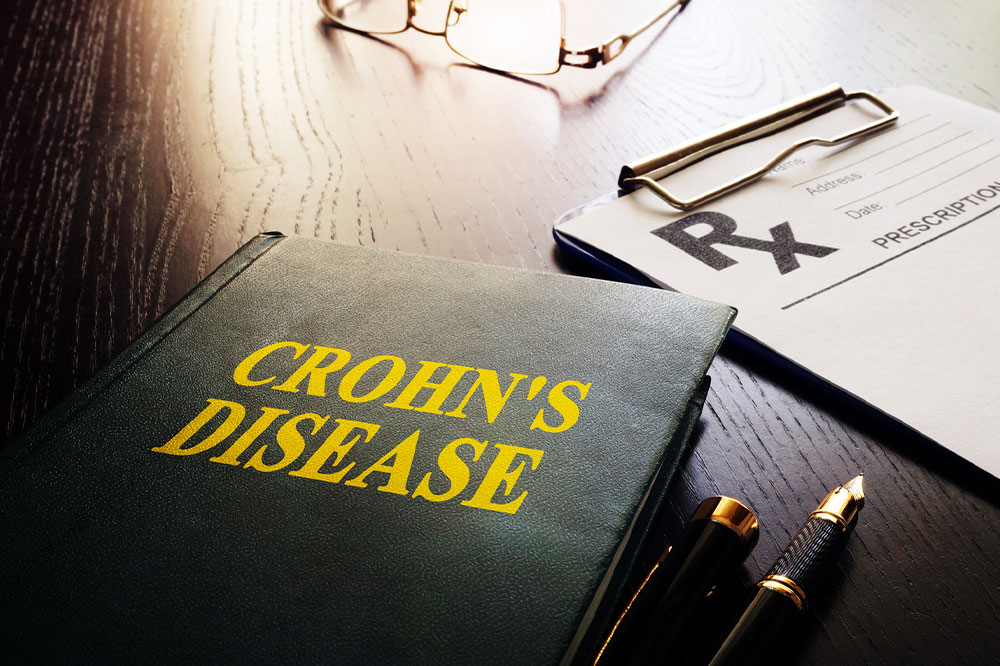Crohn’s Disease – Types, Causes, Symptoms, and Management

Crohn’s disease is listed among the lifelong form of inflammatory bowel conditions. This inflammatory bowel disease (IBD) is so powerful that it can cause chronic inflammation of a person’s gastrointestinal tract. This chronic disease affects large and small bowels and can affect the functioning of any part of one’s GI tract. Crohn’s disease can lead to diarrhea and stomach cramps. Here are a few things to know about this disease, including its symptoms, causes, and treatment options.
O verview
As mentioned above, Crohn’s disease is one of the lifelong form of inflammatory bowel disease. However, the reason for Crohn’s disease is still unknown.. It is said that it results from a combination of factors such as genetic, environmental, and a wayward immune system. Family history has a significant role to play in this. If there is a family history of irritable bowel disorder, there are more chances that a person can develop this disease too. Moreover, people who have Crohn’s disease are at higher risk of developing colorectal cancer. There is no surgical cure for this disease. Surgery is only a temporary solution but is used when other treatment options are not enough to keep the disease under control. Crohn’s disease can take a severe toll 0n a person’s body, and health. And the sooner the disease is detected, the sooner a person can consult a healthcare provider, take appropriate treatment, and carry on with a normal life.
Types
Crohn’s disease can cause negative effects on the different sections of the digestive tract. Different types of Crohn’s disease are:
Ileocolitis : This is the most common type of Crohn’s disease. Inflammation can occur in both the small and large intestines or colon.
Ileitis : In this, swelling and inflammation develop in the small intestine.
Jejunoileitis : The upper half of the small intestine is affected. This could be in patchy areas.
Gastroduodenal : The stomach and the top of the small intestine are affected by irritation and inflammation.
Causes
The actual cause of Crohn’s Disease is unknown. There are a few factors that may increase the risk of a person developing the condition, such as:
Genes : IBD runs in families. If there is a family history, a person may be at an increased risk of developing IBD. However, some changes in the genes can make a person more susceptible to developing this condition.
Autoimmune disease : The bacteria present in the digestive tract can cause the body’s immune system to attack healthy cells and make a person fall sick.
Symptoms
If a person is suffering from this disease, one may experience periods of no or very mild symptoms. This is referred to as remission. There are also periods where the symptoms are the most severe or are aggravated. Some of the common symptoms are listed below:
Chronic diarrhea is the result of the digestive tract not being able to function properly
Abdominal pain that occurs due to inflammation in the gut
Fever is a common sign of any infection in the body
A feeling of fullness
A loss of appetite that could result in weight loss due to fear of the resulting diarrhea
Other symptoms to watch for and report to the doctor are anal fissures, abnormal skin tags, anal fistulas, and rectal bleeding.
Diagnosis
Crohn’s disease can be detected by the following medical methods:
Blood test : A blood test can indicate a high number of white blood cells that may be a sign of infection and inflammation. The test also gives a count of low red blood cell count.
Colonoscopy : During this test, the doctor uses an endoscope to study the inside of one’s colon. The tissue sample is taken to check if there is any sign of inflammation.
Stool test : This test involves studying a stool sample to check if there are any bacteria or parasites. It rules out infections that can cause chronic disease.
CT scan : By creating an image of the digestive tract, the doctor understands how severe intestinal inflammation is.
GI endoscopy : A long and thin tube is inserted through a person’s mouth, and a camera is attached with the same so that the doctor can see the inside of one’s body.
Treatment
The treatment for Crohn’s disease depends on the severity of the condition. Here are a few treatments for Crohn’s disease:
Antibiotics : Antibiotics help prevent infections. Severe infections can cause pus and fistulas.
Biologics : Here, monoclonal antibodies can suppress the immune response.
Bowel rest : The doctor may advice a person with Crohn’s disease to give their intestines some rest by giving them a chance to heal. One may be asked to stay without food and drinks for a few days, and may receive intravenous nutrition and be allowed to drink a prescribed liquid using a feeding tube.
Immunomodulators : These treatment options can suppress an overactive immune system.
Surgery : As said above, surgery is not the cure of Crohn’s disease, but it can treat complications. A surgery can be done to correct intestinal perforations, blockages and bleeding.
Crohn’s disease is a serious and difficult condition. It can lead to severe complications such as bowel obstructions, colon cancer, anal fissures, abscesses, malnutrition, and more. If the disease occurs during pregnancy, there are higher chances of premature labor, miscarriage, or low birth weight of the baby. The best way to control the disease is to make healthy lifestyle changes such as managing stress levels, exercising regularly, and following a low-fat meal plan. The disease might flare up at any time and affect a person’s daily life. Therefore, one should get in touch with a healthcare provider immediately and make some lifestyle changes suggested by the healthcare provider so one can manage the symptoms and live an active life.






